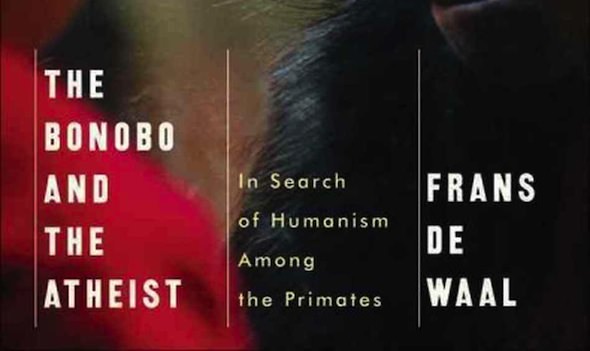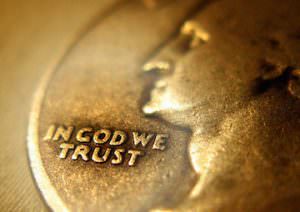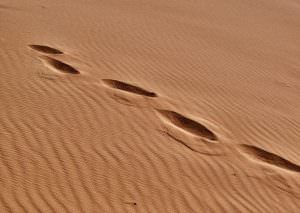|
To see long excerpts from “The Bonobo and the Atheist” at Google Books, click here.
|
“The Bonobo and the Atheist”
A book by Frans de Waal
Ken Ham, head of the Creation Museum in Petersburg, Ky., went toe to toe with Bill Nye the Science Guy at a creation versus evolution debate in February. Yup, despite the overwhelming scientific evidence, this is still in debate.
Though he needed no help, the Science Guy might have had an even more convincing victory had he consulted Frans de Waal and his book “The Bonobo and the Atheist.” De Waal’s novel approach would have stunned Ham into silence (or so one would hope): The author posits that religion is actually an evolutionary trait human beings have acquired as necessary for survival. It’s the ultimate atheist backhanded compliment: Yes, religion is great, so great that we humans acquired it through the natural process of evolution.
Score one for the atheists.
In his engaging, often humorous “The Bonobo and the Atheist,” de Waal argues that religion spawned from a biologically innate need for fairness. Rather than the top-down morality of religion, which may have begun as human populations grew in size and required a more all-present authority to maintain order within society, de Waal proposes that religion stemmed from a bottom-up morality, innate in all social animals: an instinct for fairness, order and even for altruism and forgiveness. It is this morality that created religion, not the other way around.
De Waal uses a painting by Hieronymus Bosch as a jumping off point. Dutch like de Waal, Bosch painted during the Middle Ages and is most famous for his triptych “The Garden of Earthly Delights.” In his painting, according to de Waal, Bosch is speaking less about the dominant religion of his time, and more about the very seed of religion itself. Hidden behind the surreal and fantastical images of earth, heaven and hell is a version of the world that points to a deeper morality and of a human being with a basic sense of right and wrong, beyond religious edicts.
De Waal does an admirable job playing art historian, going back to the painting at various points in his book, as the artistic expression of his ideas on morality. His view of the painting and the many critical writings relating to it provide some very vivid color commentary. But using Bosch’s work as a lens is unnecessary, because de Waal’s argument is captivating all on its own.
After playing down the debate between atheists and creationists, he introduces his Exhibit A: the bonobo. Most of us have heard of our closest ape cousin and its strangely human sexual proclivities: promiscuity, homosexual partnering and masturbation. But de Waal insists that “the more one watches bonobos, the more sex begins to look like checking your email, blowing your nose or saying hello. A routine activity. We use our hands in greetings . . . while bonobos engage in ‘genital handshakes.’ . . . We associated intercourse with reproduction and desire, but in the bonobo it fulfills all sorts of needs.”
Sexual behavior is not the only thing we humans have in common with bonobos. De Waal points to a special neuron in the brain called a spindle cell, “thought to be involved in self-awareness, empathy, sense of humor, self-control,” that was initially known only in humans. This neuron was only recently discovered in the brains of apes, including bonobos. In a subsequent study comparing the brains of chimpanzees and bonobos, it was found that regions in the brain “involved in the perception of another’s distress, such as the amygdala and anterior insula, are enlarged in the bonobo. Its brain also contains well-developed pathways to control aggressive impulses.” The findings “suggest that this neural system not only supports increased empathic sensitivity in bonobos, but also behaviors like sex and play that serve to dissipate tension, thereby limiting distress and anxiety to levels conducive with prosocial behavior.”
Ironically, bonobos’ sexual openness provides a key to their moral sense. To the bonobo, sex is religion.
De Waal then provides some vivid illustrations of whales, elephants and of course, chimpanzees, as proof that highly social animals know the difference between right and wrong, at least in terms of the code of their social group. Contrary to our idea of wild animals, unable to control their basest impulses, these creatures actually inhibit certain behaviors, knowing how violators are punished if they don’t. It’s this expectation of punishment and reward, and the inhibition of behavior, that de Waal argues is the basis of morality.
One of the many eye-opening examples de Waal provides involves a group of 15 chimpanzees at the Tama Zoo in Tokyo. A caretaker would often throw macadamia nuts to the chimps from a rooftop. Macadamia nuts were one of the few nuts that female chimps could not crack with their teeth, and this group of chimpanzees had no males. The female chimps proceeded to collect all the nuts they could, and sat at different parts of the enclosure, all oriented toward the “cracking rock.” Then, de Waal recalls:
“One chimp walked up to the station . . . placed the nut on the rock, lifted a metal block and hammered until the nut gave up its kernel. . . . Having finished her pile, she then made room for the next chimp, who placed her nuts by her feet and started the same procedure.”The mad, violent rush to the cracking rock one would expect doesn’t happen. De Waal notes that “when we see a disciplined society, there is often a social hierarchy behind it. . . . If one of the lower-ranking females and her chimp had tried to claim the cracking station before their turn, things would’ve gotten ugly. . . . A social system is a giant system of inhibitions, which is no doubt what paved the way for human morality, which also uses such a system.”
De Waal’s argument is as follows: Social animals have a set of rules and principles for an orderly society, and they exhibit (or inhibit) behaviors according to these rules. So, if the community rewards those who follow the rules and punishes those who don’t, aren’t these animals living under some sort of moral code?
According to de Waal, they are. This moral code then develops out of its original evolutionary use into higher prosocial feelings such as altruism, affection and even kindness. For de Waal, kindness started first when animals were kind to others, knowing that the alliances would be useful later on. They were depositing credits, knowing they would one day need to make a withdrawal. These animals developed “good feelings” associated with these actions, because the actions were beneficial. But after years and years of evolution, that “reciprocal altruism” developed into kindness, without thought of reciprocity. The good feelings remained and kindness became an instinct all its own.
De Waal recalls the story of Amos, an older male chimp who after months of hiding his weakened state was slowly succumbing to an illness. He finally began to show how sick he really was the day before he died. With his heart racing and sweat pouring down his face, he remained in the night cage, refusing to go outside. And yet, the other chimps would visit him from time to time and he positioned himself in the night cage near where the others could reach him.
“A female, Daisy, gently took his head to groom the soft spot behind his ears. Then, she started pushing large amounts of excelsior (wood shavings used to build nests) through the crack in the cage. . . . Daisy reaches in several times to stuff it between Amos’ back and the wall. . . . Didn’t it suggest that Daisy realized that Amos must be uncomfortable and that he would be more comfortable leaning against something soft, similar to the way we arrange pillows for a patient in the hospital?”
De Waal approaches the sublime through examples like Daisy and Amos, when we see our humanity clearly reflected in these animals. Throughout the book, as we encounter creature after creature that are so much like us, that have emotions and forgive and reconcile with one another, that nurse those that are injured and adopt unrelated infants, our view of our own humanity simplifies and at the same time expands.
“The Bonobo and the Atheist” is an illuminating journey into the very beginnings of morality. It is highly unlikely that those who profess a religion loudly would be caught with any book with the word “atheist” in its title. And that would be a shame, because de Waal’s book, more than many atheist diatribes, is reaching for something more profound. Although he insists that religion grew out of the seeds of morality, he also acknowledges that all human cultures exhibit this trait for some reason. And that reason may be that religion actually does aid in an individual’s and a group’s desire for order, fairness, cooperation and altruism. This atheist seems to be saying that religion, but more broadly morality, is essential to our survival as a species, because we would not have evolved to have it if it wasn’t.
“Religion is much more than belief,” de Waal writes. “The question is not so much whether religion is true or false, but how it shapes our lives, and what might possibly take its place if we were to get rid of it the way an Aztec priest rips the beating heart of a virgin. What could fill the gaping hole and take over the removed organ’s functions?”
That doesn’t sound like an atheist at all.
With the Vatican reporting that Pope Francis drew a staggering 6.6 million people to his audiences, masses and other Vatican events in the first nine months of his papacy, it is clear that religion continues to hold the attention of many, and will do so for the foreseeable future. But de Waal’s book respectfully illustrates that religion’s lasting legacy has less to do with enigmatic leaders and God-given scripture, and more to do with the seeds of morality already embedded in our genes tens of thousands of years ago.
I confess that after reading “The Bonobo and the Atheist,” de Waal’s made a convert out of me.
Alexis Camins is an actor, writer and father. He’s written three plays: “To the Colored American Soldier,” “Family Lies” and “Drinking with Dad.” He has also written a one-and-done blog called “Why I’m Tired of Being an Asian Actor.”






You need to be a supporter to comment.
There are currently no responses to this article.
Be the first to respond.